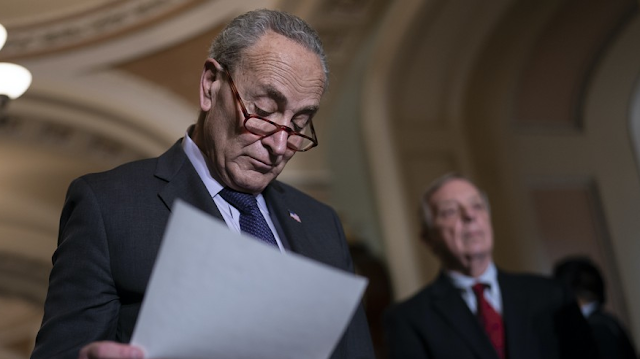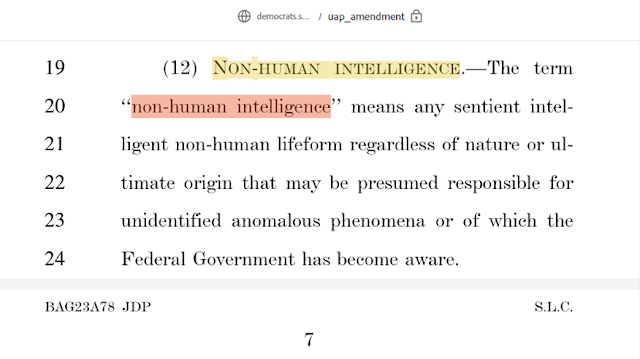By Anthony F. Sanchez, Author & UFO Researcher
For UFO Currents
For UFO, and UAP study by the military and independent researchers alike, legislative developments are critical. The UAP Disclosure Act of 2023, a component of the Schumer legislation, represents a crucial moment in this ongoing narrative. Initially a thorough 64-page proposal, it promised a groundbreaking level of openness about UAPs, potentially reshaping public access to information on Non-Human Intelligence (NHI) and unidentified technologies.
However, the journey through the legislative process led to its significant reduction to just 19 pages. This drastic change, occurring before its expected integration into the National Defense Authorization Act (NDAA) for the fiscal year 2024, has sparked widespread speculation and inquiry. The act's original extensive references to NHI and unknown technologies were sharply cut down, leaving only a fraction of its initial content.
This substantial alteration raises critical questions: What influences were at play behind these revisions? The removal of key elements, such as the Independent Review Board and 'eminent domain' rights for material retrieval, alongside reduced protections for whistleblowers and an absence of subpoena powers, has led to scrutiny of the intelligence and defense contracting sectors. These entities are suspected of maintaining a longstanding culture of secrecy around UFO-related knowledge and activities.
Central to these legislative changes are four influential senators: Mike Turner, Chair of the House Intelligence Committee; Mike Rogers, Chair of the House Armed Services Committee; Mitch McConnell, the House minority senate leader; and Mike Johnson, the new Speaker of the House. The financial ties of Turner and Rogers to defense contractors add a layer of complexity to their motivations for amending this bill.
The resultant Schumer Amendment, stripped of many of its powerful provisions, merely requests that agencies release UAP information to the National Archives, lacking enforceable mandates. This situation suggests that significant disclosures concerning UAPs, crash retrievals, and reverse engineering programs may remain out of public reach. The longstanding secrecy of the intelligence community appears unchallenged, fueling further speculation about potential cover-ups.
This legislative episode must be viewed within the larger context of UAP research. Since the revealing New York Times article in 2017 about the secretive AATIP UFO program, public discourse on UAPs has undeniably evolved. However, the recent legislative developments indicate that the intelligence community and defense contractors continue to exert considerable control over the flow of information.
As researchers and the public grapple with the implications of these legislative outcomes, one must consider the broader picture. What truths about UAPs are being shielded, and why? The quest for transparency in UAP research is not merely an academic pursuit but a search for deeper understanding of our universe and humanity's place within it.
As we navigate this intricate landscape, we are left pondering: What truths lie beyond the veil of government secrecy, and how might these revelations reshape our perception of the world and ourselves?
* * *
STAY AT THE FOREFRONT OF UFO DISCLOSURE
By following and participating on these platforms, you’ll ensure that you’re always at the forefront of UFO discourse.
https://Instagram.com/UFOCurrents
https://TikTok.com/@UFOCurrents
https://Twitter.com/UFOCurrents
https://Facebook.com/UFOCurrents
https://YouTube.com/@UFOCurrents
https://UFOCurrents.blogspot.com
https://pinterest.com/UFOCurrents





Comments
Post a Comment